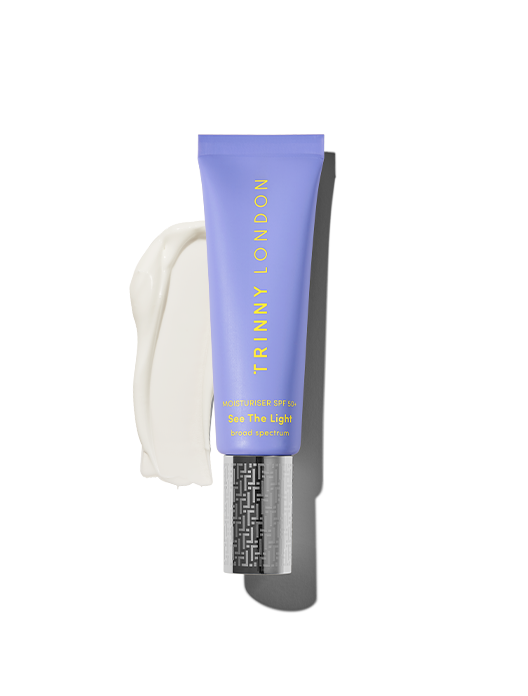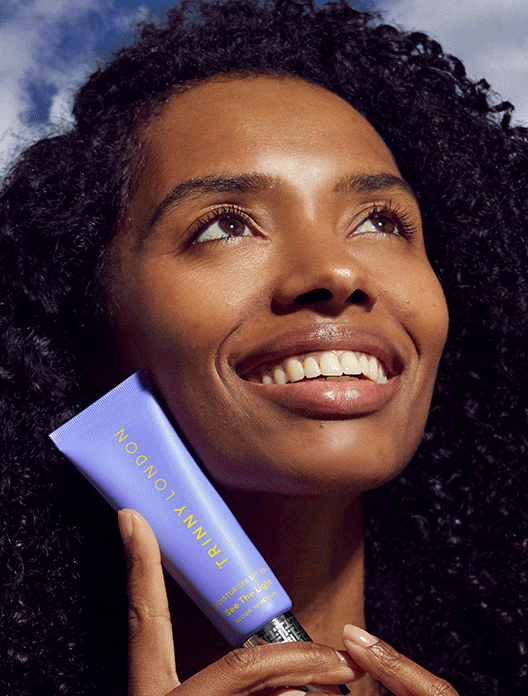

See The Light
Moisturiser with SPF 50 for hydrated, protected skin

Skin pigmentation comes in a number of forms, including melasma, sun spots and post-inflammatory hyperpigmentation. They present differently, and are triggered by varying factors.
Pigmentation refers to natural colouring of our eyes, skin and hair, all of which are given their colour by a protein called melanin. The word pigmentation is often used to signify hyperpigmentation, where patches of the skin become darker. Hyperpigmentation is an umbrella term, with different conditions sitting beneath it.
Most of the time, the melanin-producing cells in our bodies (known as melanocytes) work as they’re supposed to, creating the right amount of melanin required. In cases of hyperpigmentation and melasma, these melanocytes go into overdrive, creating much more melanin than is needed. Picture it like a fairground game malfunctioning and spitting out thousands of tickets. This excess melanin manifests itself on the surface of our skin as uneven patches of darker skin tone.
Those with deeper skin tones are more prone to hyperpigmentation as there is already more pigment present in the skin. For this reason it’s more difficult to fade, and frustratingly, recommended treatments, such as lasers, can actually make the marks worse.
In most cases, hyperpigmentation is not a cause for medical concern, but it can make those with the condition feel self conscious. If you’re noticing marks on your skin that are new, changing in shape or altering in colour, seek the advice of your doctor.
To help you get to know your skin, we’ve put together a handy who’s who of skin pigmentation...
What does melasma look like? Of all the different types of hyperpigmentation, melasma covers the largest surface area. Melasma patches are flat, have a brown or grey-ish tone and tend to only appear on the face. It is most noticeable in the summer, as sun exposure makes it more prominent.
What causes melasma? Melasma tends to be triggered by hormonal changes, and can be sparked by birth control and pregnancy. The latter is the most common, and the reason why the condition is also sometimes referred to as “pregnancy mask”. Melasma can occur in men, but appears mostly in women.
What do sun spots look like? Sun spots are flat, darker marks on your skin that are bigger than a freckle. They tend to appear or become more prominent during the summer, but stick around for winter too.
What causes sun spots? UV rays emitted by the sun stimulate your body’s melanin production, which is why our skin gets darker after basking in the sunshine. With more melanin being produced, over-production becomes more likely, and sun spots (also known as age or liver spots) form. Wearing a daily SPF 50 (such as See The Light SPF 50+ Moisturiser) can help prevent sun spots due to the advanced UV filters.
What does post-inflammatory hyperpigmentation look like? Post-inflammatory hyperpigmentation looks similar to age spots. They won’t cover as large an area as melasma.
What causes post-inflammatory hyperpigmentation? These marks are left behind when the skin has become inflamed. They can follow breakouts, wounds or even reactions to skincare products and in-clinic laser treatments. Making sure you treat blemishes with care (that means no squeezing or picking) can reduce the likelihood of post-inflammatory hyperpigmentation, but unfortunately some people are just more prone to it than others.
Shop the article


Moisturiser with SPF 50 for hydrated, protected skin